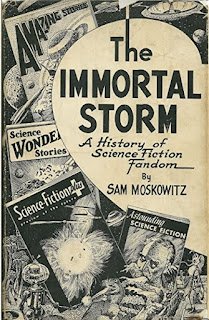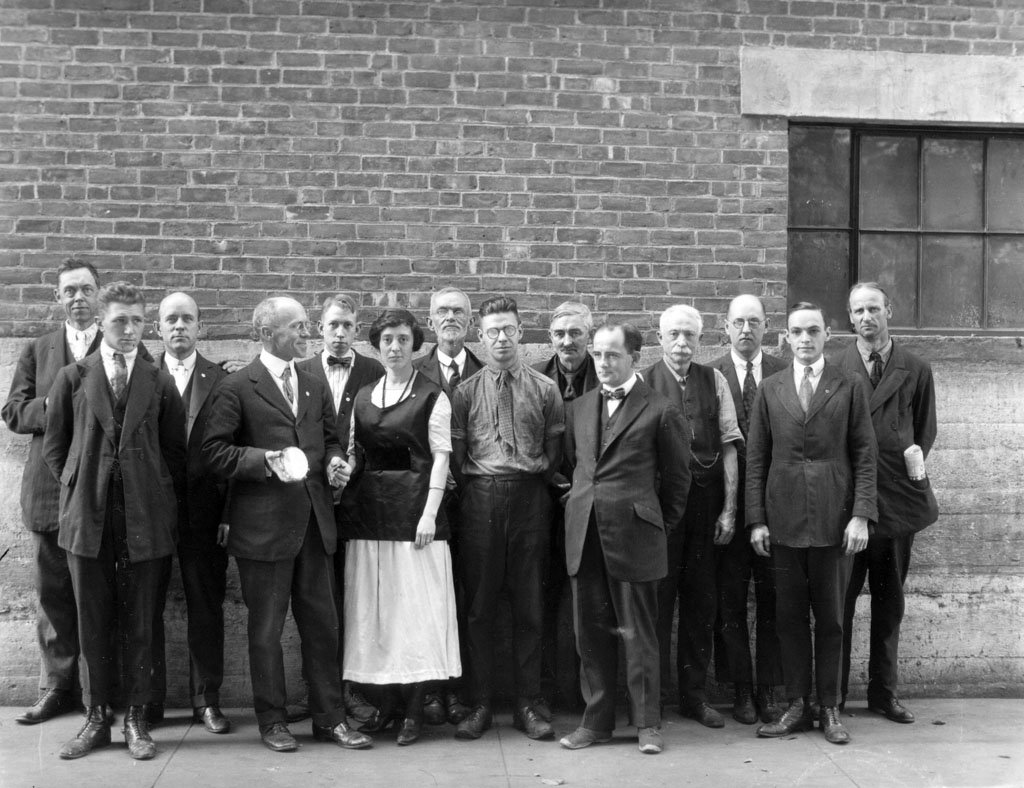The history of science clubs

In reading JD Cowan’s series on The Immortal Storm, a history of the foundation of science fiction fandom in the 1930s, one of the major conflicts that developed in those early days was between fans who were interested in science as such, and those who wanted stories about fantastical futures.
Let’s see what Sam Moskowitz had to say about those early days:
"Let it again be stressed that the very first organized groups consisted of science fiction fans. They were one in mind with Hugo Gernsback in believing that every one of their number was a potential scientist, and that the aim of every fan should not be a collection of fantastic fiction, but a home laboratory where fictional dreams might attain reality."
…
"Love of science fiction was the basic bond that united these fans. Yet discussions in The Comet were a far cry to discussions of fiction — articles such as "The Psychology of Anger," "Chemistry and the Atomic Theory," "Recent Advancements in Television," "What Can Be Observed with a Small Telescope" and "Psychoanalysis" abounded. As time passed, however, the non-scientific note increased in volume somewhat. Articles based on science fiction stories appeared occasionally."
The magazines in question were pretty limited in readership and in length of publication. I suspect there were a bit of a fringe phenomenon to more serious efforts like something I read about in a Scott Locklin post today, Ruling Engines and and Lapping the Ultimate Screw.

The Telescope Makers of Springfield Vermont: Oscar S. Marshall, Clyde W. Baldwin, F. Eugene Lockwood, Russell W. Porter, Raymond P.W. Fairbanks, Gladys A. Piper, Oscar P. Fullam, Ralph A. Baker, Frank H. Whitney, Roy J. Lyon, Everett H. Redfield, Carlton B. Damon, Ernest N. Brookings and Guy E. Baker. (Not in the photo were Albert A. Herrick, Charles A. Longe and John M. Pierce). Photo taken October 1920 behind the Jones & Lampson factory in Springfield, Vermont.
Springfield, Vermont has a Telescope Makers Society that was founded in 1923 and has been in existence ever since. This sort of thing was fairly common in the 1920s and 1930s, which are not coincidentally the most innovative decades of recent American history. Read Locklin’s description of two of the members of that club:
…Wilbur Perry of the Springfield Telescope Club eventually got a job running the Rowland engines at John Hopkins and was widely recognized as a genius and meticulous engineer with perfect hands. Strong hired him for this expertise. His fellow technical coworker was Dave Broadhead, another optics hacker who made complicated telescopes in his spare time, and at one point made a living crafting roof prisms for the war effort, something he picked up in his spare time from reading magazines. He literally made them in his basement. His education, as far as I am able to determine, was reading popular science and popular mechanics magazines, going to the library and fiddling with things. Broadhead is the kind of guy I keep harping about; the careful working class machinist craftsman who basically no longer exists in American society. . Strong at one point asked him for a pair of 36″ parabolic mirrors, which he literally made in his basement 30 days ahead of a 90 day schedule.
These clubs encompassed both skilled craftsmen such as Perry and Broadhead and eminent scientists like John Donovan Strong, a member of the 100 to 1 Club. Locklin gives examples of other prominent science clubs whose members gave us the science and technology we take for granted: “…Wernher von Braun and company’s rocket club, to the famous Lunar society, to the X club even the Bohemian Club was responsible for the US nuclear weapons program”.
A lot of science fiction’s cachet comes from being tangentially associated with all these genuinely very accomplished men. In retrospect it is astonishing how much effort was invested by early science fiction fandom in expelling people from their movement whose primary interest was in science and technology, behavior documented in embarrassing detail by Moskowitz.
But possibly because the real center of mass of this far broader and more important social movement was elsewhere, the antics of the mostly teenaged science fiction fanatics is not more widely known.
Comments ()